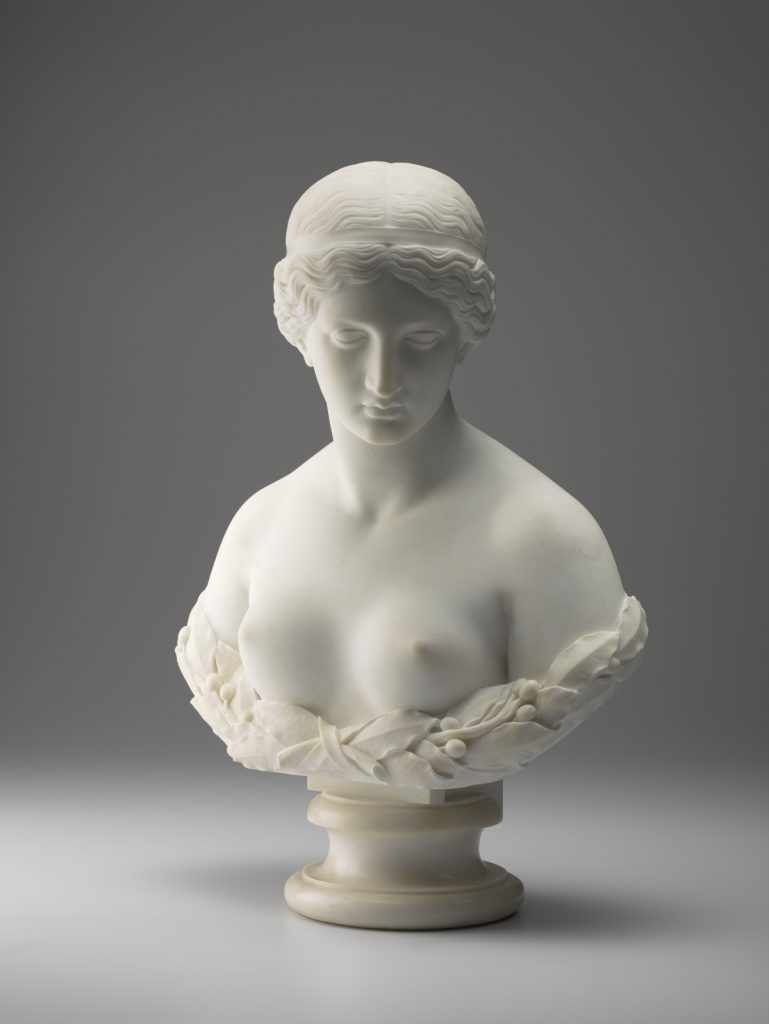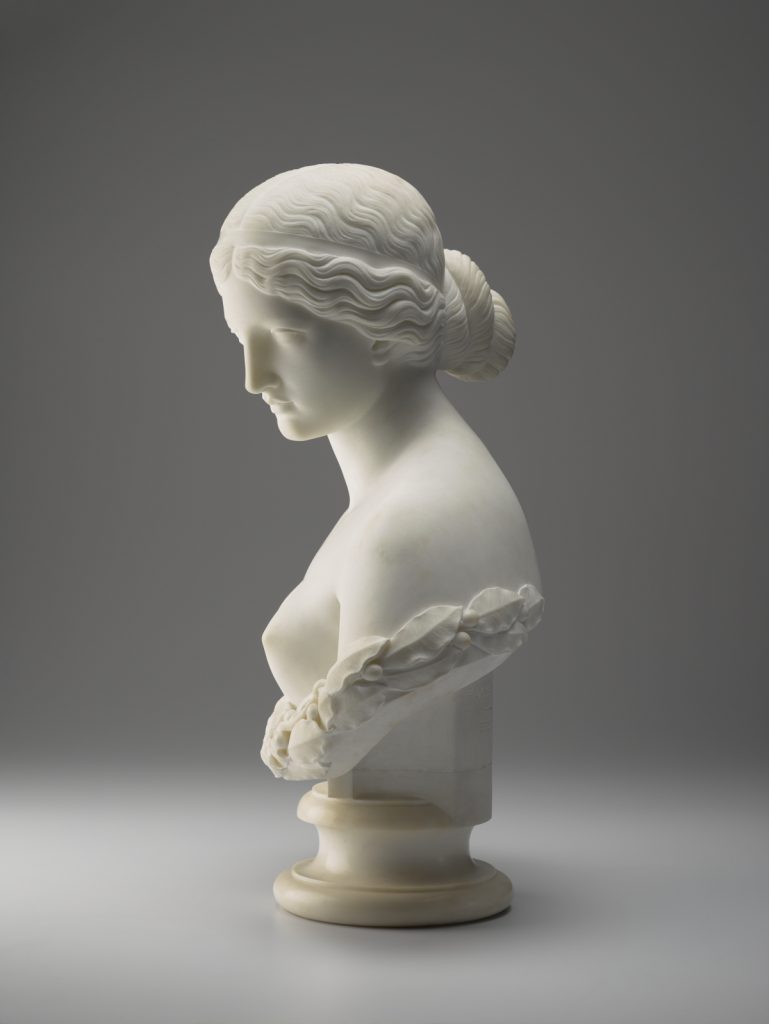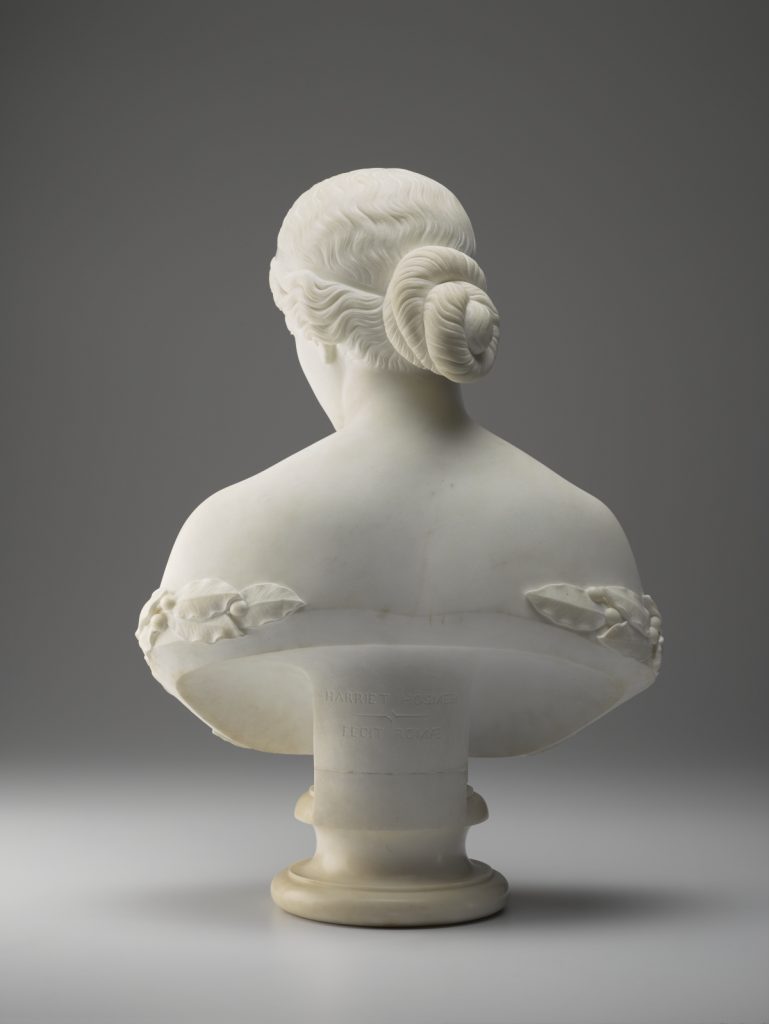Daphne (work of art)
Artwork Info
Key Ideas
- This is a marble bust, or three-dimensional sculpture of a person’s head, neck, shoulders, and chest. The bust depicts Daphne, a nature spirit from Greek mythology.
- The base of the bust is an integrated socle (pronounced so-kul), or structural support. The bust and its base were sculpted from a single piece of marble.
- The sculpture is an example of neoclassical art. It was inspired by ancient Greek and Roman art, but it was created at a later time.
- Harriet Goodhue Hosmer was the first woman to become a professional sculptor. This was during the 19th century, when women did not have equal access to art education or opportunities to work as professional artists.
- Hosmer studied human anatomy and took private sculpting lessons before she became a sculptor. She sculpted Daphne as her first independent work.
- Although she was born and raised in America, Hosmer moved to Rome and spent most of her life there. She lived among a colony of famous American artists and writers in Rome.
Learn More
This marble bust was created by a woman sculptor at a time when women were not allowed to have the same art education as men. In the 19th century, it was rare for a woman to have a career at all. A woman making a living as a professional artist was unheard of during that time. Harriet Goodhue Hosmer was the first woman to become a professional sculptor. She forged a new path for generations of women artists.
Hosmer took classes in human anatomy and private lessons in sculpting before she moved to Rome to study art. She joined a colony of well-known American artists and writers who lived in Rome, including novelist Nathaniel Hawthorne and sculptor Edmonia Lewis. During a time when gender roles limited women’s freedoms in society, Hosmer lived openly as a lesbian, owned an art studio, and ran her own art business. Even though she lived in Rome most of her adult life, she is considered to be the most prominent woman sculptor in America during the 19th century.
Daphne was Hosmer’s first independent sculpture. It is a bust of a water nymph, or nature spirit, from Greek mythology. According to the story, Daphne was the daughter of a river god. The sun god Apollo fell in love with her and chased her. In an effort to escape from Apollo, Daphne prayed to her father and he transformed her into a laurel tree. Hosmer’s neoclassical sculpture depicts Daphne right before she was covered in laurel leaves.
Neoclassical sculptures are works inspired by ancient Greek and Roman art. Like most neoclassical busts, Daphne is decorated with adornments (in this case, laurel leaves) that indicate her identity. The base of the sculpture is an integral socle, or structural support. It is carved from the same piece of marble as the bust.
I honor every woman who has strength enough to step outside the beaten path when she feels that her walk lies in another; strength enough to stand up and be laughed at, if necessary.
Harriet Goodhue Hosmer
Additional Resources
Resources for Teachers
- Read the story of Daphne and Phoebus from Ovid’s Metamorphoses (Book 1, lines 438 through 567).
- View a portrait of Hosmer by Sir William Boxall.
- Read an article about Hosmer.
Resources for Students
- View a similar sculpture that inspired Hosmer to create Daphne.
- Watch a video interview with North Carolina artist Peter Oakley, who sculpts everyday objects out of marble.
- Listen to an audio clip about Daphne.



